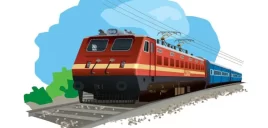Early locomotives in India had a bewildering variety of classification schemes. Regional railways had their own classification schemes too. For more details on this, refer to reference works such as Hugh Hughes’ classic 4-volume work on Indian locomotives.
The first BESA standard classes appeared in 1903. The HPS, SPS, HGS, and SGS steam loco classes were quite popular. HP = Heavy Passenger, SP = Standard Passenger, HG = Heavy Goods, SG = Standard Goods. In these, the suffix ‘S’ stands for ‘superheated’. An alternative suffix ‘C’ indicates a conversion to superheating, e.g. SGC. A suffix ‘M’ was sometimes used to mean ‘modified’, for variant designs. However, these classification codes were by no means universally adopted, and various railways had their own schemes.
ये भी पढ़े – सिर्फ खूबसूरती ही नहीं खानपान में भी काफी अलग है भूटान
In 1924, when IR decided to classify engines, the initial notation was:
X for broad-gauge
Y for meter-gauge
Z for 2′ 6″ narrow-gauge
Q for 2′ 0″ narrow-gauge
The IRS (Indian Railway Standard) classes XA, XB, XC, XD, XE, and others in the ‘X’ series for BG; YA, YB, YC, YD, and YE for MG; and ZA, ZB, ZC, ZD, ZE, ZF for 2’6″ NG; and QA, QB, QC for 2′ NG, were all adopted as standards by the Locomotive Standards Committee by 1925 or soon thereafter.
In fact the Q classes were never built, and of the Z classes, only ZB and ZE (and a modified version of ZF to agree with existing locos) classes were built. Not all locos of a given class were built by the same manufacturer. Some of these class designations were re-used later (e.g., ZD). In 1945, ‘IRS’ became ‘IGR’ (Indian Government Railway Standard), although the class notations remained the same.
‘W’ was used for broad-gauge instead of ‘X’ soon after World War II, with the introduction of the WP and WG locomotives. ‘Q’ was also replaced by the ‘N’ code. Some early electrics had codes beginning with ‘E’ (EF, EM, EG, etc.), but after about 1945, when diesel and electric locos were included in the scheme, the codes for motive power were added (D, A, C, CA, B), which have remained unchanged.
Post-independence history of ‘mixed’ vs. dedicated loco models
In the early days locos were classified strictly according to the load: goods engines (G) (e.g. WG, YCG, WCG, WAG, etc), or passenger engines (P) (e.g. WP, WCP, etc). Then the trend was towards a whole fleet of mixed traffic (M) engines (e.g. WDM, YAM, WAM, WCM, etc.) Between 1960 and 1985 or so, almost every loco design was of the ‘M’ variety, with the only two exceptions being the WCG/2 (built 1971 or so) and the WAG series (WAG – 5/5B/5HA/6A/B/C/7). The introduction of the WAP engines in the early ’80s indicated a reversal of IR policy in dedicating engines exclusively for passenger operations once again. Some dedicated diesels (WDP, WDG series) are also now under development.
Source – IFRCA.org
Disclaimer: The Information /News /Video provided in this Platform has been collected from different sources. We Believe that “Knowledge Is Power” and our aim is to create general awareness among people and make them powerful through easily accessible Information. NOTE: We do not take any responsibility of authenticity of Information/News/Videos.
This entry was posted in 2 Railway Employee, STUDY NEW, Railway Employee











